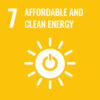To highlight best organic waste management strategies to achieve carbon footprint benefits (i), present study was co-composting of food, green and fruit waste using aerobic windrow composting, an eco-friendly, biological, and biochemical aerobic integrated waste management strategy to reduce the volume and mass of solid organic wastes.
The membrane covered windrows with basal layer bulking agent (grass clippings) generate bottom up ventilation system, results in micro-positive pressure, decreasing the anaerobic zone in compost pile and GHGs emissions by 88%, making the piles aerobic, and organoleptic.
The main objective of the present project is to monitor the physico-chemical parameters (temperature, moisture content, pH, electrical conductivity, C: N ratio.to produce safe, stabilized, and nutrient enriched soil conditioner, which is feasible with agronomic practices) is completed in 110 days using two stage windrow composting, to prevent the landfills interruption of the carbon cycle and minimize the negative environmental impact of traditional underground pit composting.
(i) Carbon footprint benefits and carbon credits from windrow composting of municipal solid waste to combat climate change.

